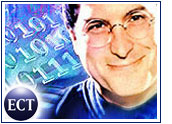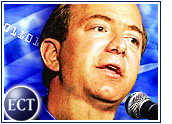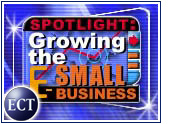
A contest posted on BountyQuest asking for examples of technology that would invalidate Amazon’s 1-Click patent ended Wednesday without a winner, but with some damage to the intellectual property claim, according to publisher Tim O’Reilly, who launched the initiative.
The submissions from the 1-Click bounty hunters included a 1993 Doonesbury cartoon, a reference to the Norm character from the TV show “Cheers” saying “Get me a beer,” a CD-Rom from a Montreal bank, and various existing patents.
Although no submission was able to show an earlier invention that matched Amazon’s 1-Click technology, as described in the patent, some of the documents offered did show single-step ordering in other shopping environments.
According to a statement on the BountyQuest site, that evidence “should make it far more difficult for Amazon to enforce its exclusive right to 1-Click ordering.”
“Simply put, the threat to e-commerce posed by the 1-Click patent is now severely diminished,” BountyQuest said.
Patent Posse
BountyQuest, a Web site that invites companies and individuals to post rewards for technical information that can be used to challenge a patent claim, was founded in October by O’Reilly, together with Amazon chief executive officer Jeff Bezos and Boston patent attorney Charles Cella.
Reportedly, Bezos pays for the patent-busting site out of his own pocket, and not with Amazon’s funds.
Court Loss
Last month, Amazon lost a round in its patent lawsuit with Barnesandnoble.com when the U.S. Court of Appeals in Washington, D.C., lifted a preliminary injunction that had barred Barnesandnoble.com from using a one-click Web shopping technology on its site.
In the ruling, the court said that Barnesandnoble.com “raised substantial questions as to the validity” of Amazon’s 1-Click patent, which allows returning customers to buy a product without repeatedly filling out personal information.
Techies Wanted
In October, O’Reilly offered a US$10,000 bounty through BountyQuest to anyone who could provide artwork or other documentation proving that Amazon was not the first to come up with the idea of one-click Web shopping.
“There was no Bounty winner, mainly because the 1-Click patent is specific to the Web and describes not just a single-mouse click system of ordering, but also claims many technical details, including the presentation of a user name and partial shipping and billing information. If you don’t match all those elements, you can’t invalidate such a patent in its entirety,” BountyQuest said.
Gadfly Goading
O’Reilly has been a longtime critic of Amazon’s 1-Click patent. In an open letter to Bezos in February 2000, O’Reilly wrote, “One-click ordering is a clever marketing slogan. However, your patent fails to meet even the most rudimentary tests for novelty and non-obviousness to an expert in the field.”
However, after examining the evidence and the submissions received through BountyQuest, O’Reilly was forced to conclude, according to the latest posting, that “the breadth, depth, and quality of the prior art documents that my Bounty turned up does, in fact, indicate that one-click shopping on the Web wasn’t nearly as obvious as we all assumed it was.”
O’Reilly added: “In fact, all the prior art that was submitted specifically for the Web confirms Amazon’s belief that they were doing something original.”
Some Came Close
Even though the bounty hunters failed to disqualify Amazon’s patent, several entries came close, including a patent issued in 1995 to Thomson Consumer Electronics for a one-click shopping mechanism for interactive TV. O’Reilly noted that the language used in the Thomson patent “uses language that matches [Amazon’s patent claim] almost exactly.”
Other patents that came close to challenging Amazon’s claim included a 1998 patent for an e-commerce system using data terminals, and a 1994 patent for a two-way radio shopping system.
O’Reilly said in a conference call with reporters that he may pay a bounty to some of the bounty hunters who came close to invalidating Amazon’s patent.![]()

















































Social Media
See all Social Media